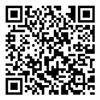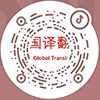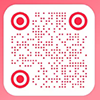Specific Solutions
How to Translate Traditional Chinese Medicine (TCM)?
A Balance of Language, Culture, and Medical Accuracy
As Traditional Chinese Medicine (TCM) gains international recognition through medical exchanges, cultural exports, and cross-border healthcare, the demand for professional and culturally sensitive TCM translation is growing rapidly. But translating TCM is far more complex than converting Chinese into another language—it involves interpreting a unique medical philosophy, adapting cultural concepts, and ensuring technical precision.
So, how should TCM be translated effectively?
1. TCM Translation Isn’t Just Literal—It’s Conceptual
TCM uses a completely different framework from Western medicine. Key concepts such as:
“Qi” (气), “Meridians” (经络), “Yin-Yang balance,” or “Spleen deficiency with dampness”
Diagnostic terms like “Liver Qi stagnation,” “Wind-heat invasion,” or “Blood stasis”
...have no direct equivalents in most Western languages.
Effective translation must retain original meaning while offering contextual or interpretive explanations. This often involves a combination of transliteration (e.g., "Qi") and interpretation ("vital energy"), with occasional annotations.
2. Common Pitfalls in TCM Translation
Terminology inconsistency
The same concept may be translated in multiple ways across different texts, leading to confusion.Overly literal translation
Phrases like “wind-cold-damp impediment” may be accurate word-for-word but lack clinical clarity to a non-TCM audience.Ignoring audience differences
A research paper for doctors vs. a brochure for patients requires completely different tone and complexity.Lack of medical or TCM knowledge
Without understanding TCM theory or modern medical parallels, translators risk inaccuracies or misrepresentation.
3. Best Practices for Translating TCM
Understand the medical logic, not just the words
Know the pattern: symptoms → syndrome → treatment → formula.Refer to authoritative bilingual sources
Such as WHO’s International Standard Terminologies on TCM, and glossaries published by Chinese medical associations.Use flexible strategies: transliteration + interpretation + annotation
Examples:气 (Qi) → Qi (vital energy)
肝郁化火 → Liver Qi stagnation transforming into fire (a pattern of emotional heat)
Collaborate with TCM experts for review
For academic, clinical, or regulatory use, having a domain specialist review the translation adds valuable accuracy.
4. Why Choose AI Rui Translation for TCM Projects?
At AI Rui Translation, we combine linguistic expertise with deep cultural and medical understanding. Our TCM translation services cover:
Academic papers, abstracts, journal articles
Textbooks and TCM education materials
Hospital brochures, clinic websites, patient education
Product manuals and herbal medicine packaging
Regulatory documents for international registration and export
We utilize:
Consistent terminology management
Native-language medical editors
Cultural localization techniques
Certified translation with official stamps (upon request)
Whether you're introducing TCM to new markets or publishing your research globally, we help you ensure that your message is both authentic and accessible.
Translating TCM is not just a linguistic task—it's a bridge between medical worlds.
At AI Rui Translation, we’re proud to support the global journey of Chinese medicine with accuracy, respect, and clarity.


















